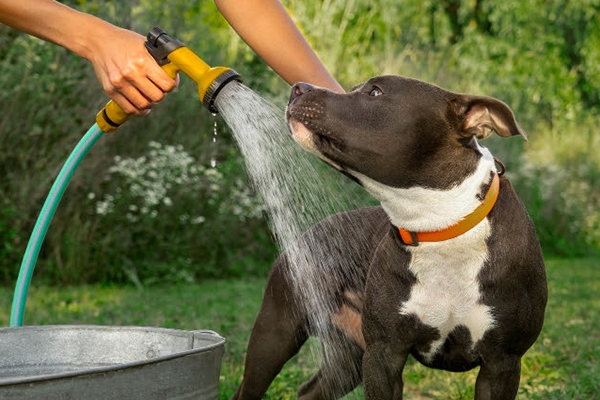This summer’s above-average temperatures highlight the need for extra pet care. Those who own cats and dogs should increase vigilance to ensure the thermal well-being of their companions. On days when the heat causes discomfort and poses a threat to human health, the same concern applies to pets.
1- Additional hydration
Make sure your pet has constant access to clean water. Heat can quickly lead to dehydration, so it’s important to always refill your water bowl. If possible, distribute more containers at strategic locations around the house to encourage the pet’s water consumption. Alternatively, make candles, freeze fruits that your partner usually eats, or use snacks that are part of their diet. Avoid offering sugar donuts. Adding ice cubes to the water throughout the day is a helpful tactic.
2- Tours sometimes with little sun
Avoid taking your pet for a walk during the hottest hours of the day, especially if the walk is in areas exposed to direct sunlight, such as sidewalks and asphalt. If the owner notices that the ground is too hot when touching it with his foot or palm, it is likely that the animal will also feel the heat, which can lead to paw burns, which is a common occurrence in summer. Boots are not recommended for use on pets as they may limit mobility and cause injury. Ideally, trips should be planned during cooler times, choosing shaded, treed and grassy habitats, always prioritizing the animal’s thermal comfort.
3- Frequent bathing and brushing
Provide your pet with regular baths to help keep it feeling fresh. If you decide to bathe them at home, be sure to use products specifically designed for pets, as some products intended for humans can be harmful to them. Also, brush your pet’s coat regularly to remove dead hair and prevent skin problems. This practice promotes air circulation and promotes natural cooling. Regarding coat length, it is recommended to consult a veterinarian to determine if it is appropriate to reduce the length for some breeds, while others may not require or even prohibit coat manipulation. A specialist will be able to offer personalized guidance for your partner’s well-being.
4- Pay attention to signs of overheating
Dogs and cats regulate their temperature mainly through breathing. Look out for signs such as difficulty breathing, excessive salivation, very red or pale gums, weakness and vomiting. If you notice these symptoms, seek the advice of your veterinarian immediately. One way to check the body temperature of these animals at home is to observe their behavior. An increase in body temperature leads to suffocation and excess salt. It is the caretakers responsibility to monitor and ensure thermal comfort on the hottest days. Brachycephalic dog and cat breeds such as the Pug, Shih Tzu, Bulldog, Lhasa Apso, Boxer and Persian cat require special attention.
5- Parasite control
Ensuring worming and vaccination is a constant responsibility of owners throughout the year, but requires special attention during the summer. During this period, there is a significant increase in the incidence of parasites and insects such as fleas and ticks. It is recommended to use anti-parasite products recommended by your vet, while it is important to be aware of possible cases of viruses, gastroenteritis and allergic dermatitis. As with us humans, summer represents a period of greater prevalence of these conditions.

Issue 2136

